#new zealand fungi
Explore tagged Tumblr posts
Text

Entoloma hochstetteri by Mary Smiley
#werewere-kōkako#Entoloma hochstetteri#fungi#fungus#upload#new zealand#New Zealand mushrooms#new Zealand fungi#NZ#nature#mycology#gilled mushrooms#mushroom gills#blue pinkgill#blue#blue mushroom#blue mushrooms#azulene#azulene pigment#nature photography#photography#mushroom observer#fungi photography#wild fungi#E. hochstetteri#Saprotrophic#fibrillous#Mary Smiley#ladyflyfish
92 notes
·
View notes
Text
#2689 - Hypholoma acutum

Extra glossy because it was pissing down when I found these growing in profusion in Kiwi Park.
Easily mistaken for the Sulphur Tuft Hypholoma fasciculare, but recent DNA works shows that that species does not occur in Aotearoa.
The genus is widespread, usually growing on dead wood, but also in moss and on moorland.
Queenstown, Aotearoa New Zealand.
2 notes
·
View notes
Text

Jay Lichter Illuminates Stunning Colors and Textures in Macro Photos of Elusive Slime Molds
478 notes
·
View notes
Text
Kakapo and moa on New Zealand once filled the role more commonly associated with mammals elsewhere in the world. Truffle like fungi adapted to fruit above ground and with red/blue colouration to mimic fallen fruit, since the birds forage based on visual cues rather than scent.
88 notes
·
View notes
Text








Tiritiri Matangi has quite a few mushrooms
26 notes
·
View notes
Text
Entoloma hochstetteri
Also known as the blue pinkgill or sky-blue mushroom.



Entoloma hochstetteri grow in the leaf litter and soil of forests in New Zealand. It is the country’s national fungus as of a 2018 poll. It is featured alongside the kōkako bird on the 50 dollar note. This is due to the myth that the bird gained its blue wattles from rubbing its cheek against the mushroom.
Examples of the bird, banknote and a stamp from a set of 6 different native fungi issued in 2002. The banknote is the only banknote in the world that features a mushroom!
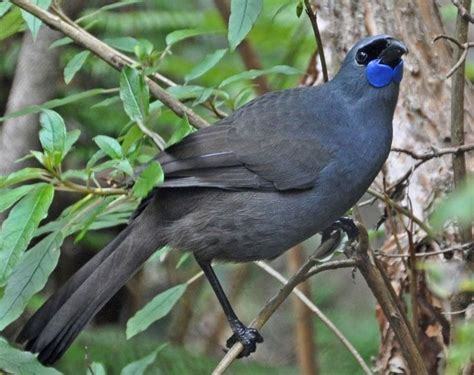


It is debated if a similar mushroom found in Australia is also the same species.
The fungus is a member of the Entoloma genus which means its spores are a reddish pink colour.
It is unknown if the mushroom is toxic or not but many other members of the genus are poisonous.
#IM BACK!!!!#fungi#fungus#soupandmushrooms#mushrooms#Entoloma hochstetteri#Entoloma genus#new zealand#postal stamps#stamps#hell yeah im tagging post now
36 notes
·
View notes
Text

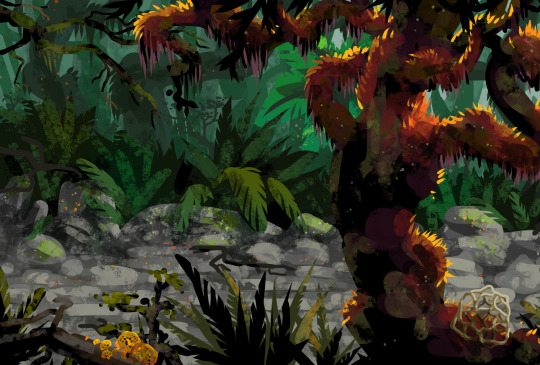


I made a background for an animation in class, the prof said we could do any style, so I experimented!
#i spent 11 hours on this and then it turned out it wasnt even due the next class...#we had a lab day to work on it in-class and the prof just. sent me home#which is great because working in the lab sucks because i gotta lay down like every 15-20 minutes if i have to work sitting up#and that's more comfortable to do on the dorm's floor than the lab's floor where all my classmates are#digital art#aotearoa#new zealand#nz#rainforest#skeleton#skull#fungus#fungi#mushrooms#nuclear#artists on tumblr
34 notes
·
View notes
Text
Mushroom of the Day: Blue Pinkgill/Entoloma hochstetteri
Other names: sky blue mushrooms
Geographic location: New Zealand, Australia, and India; growing location: leaf litter
Characteristics: bright blue mushroom that has a small pointed cap. The girls may leave a pink print to sit on paper overnight.
Grow to maximum Demeter of about 1.5 inches




#cottage aesthetic#nature#cottagecore#mushrooms#fungi#plants#blue#pink#new zealand#australia#india#follow
16 notes
·
View notes
Text
there is a book about fungi by a man name Merlin Sheldrake. Merlin. Sheldrake. not in a million years could i have come up with a better name for a fungi enthusiast myself. say it out loud—Merlin Sheldrake—and just try to tell me that’s not man who knows how to love a fungus. A+ no notes
#fungi#btw i love the way british ppl say fungi#like fung-ee#new zealanders do that too#and probably other accents do as well idk#but i love it#fungee#but i guess then you can’t do the ‘why are mushrooms great at parties’ joke#still#fungee!
18 notes
·
View notes
Text

I am convinced that psychedelics are not a panacea, but they can play a role in healing and connection, both for the people that choose to use them and for those that do not.
#psychedlicart#mushies#mushroom#trippy#mycology#ecstacy#crystals#ketamene#australia#new zealand#fungi#edibles#hallucinogenic#us#usa#uk
4 notes
·
View notes
Text
~ 0Oooo0o0O0OOoOOo0o00o0o00 ~ ! ~ It Glows ~ ! ~

Joseph Pallante, CC BY-SA 4.0 https://creativecommons.org/licenses/by-sa/4.0, via Wiki
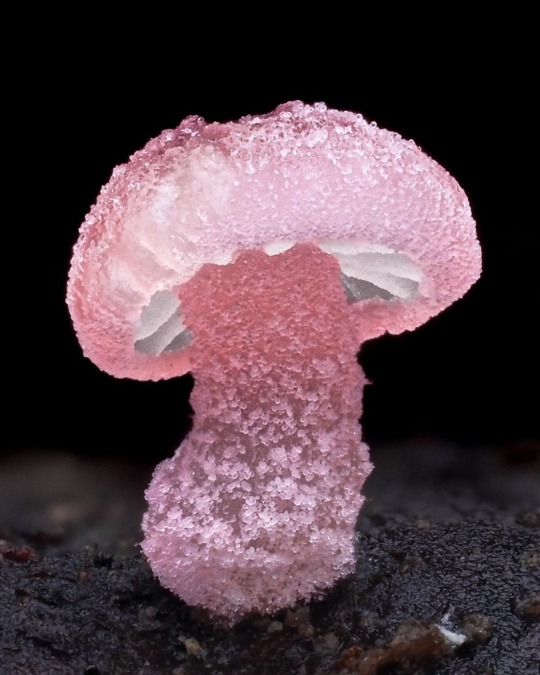
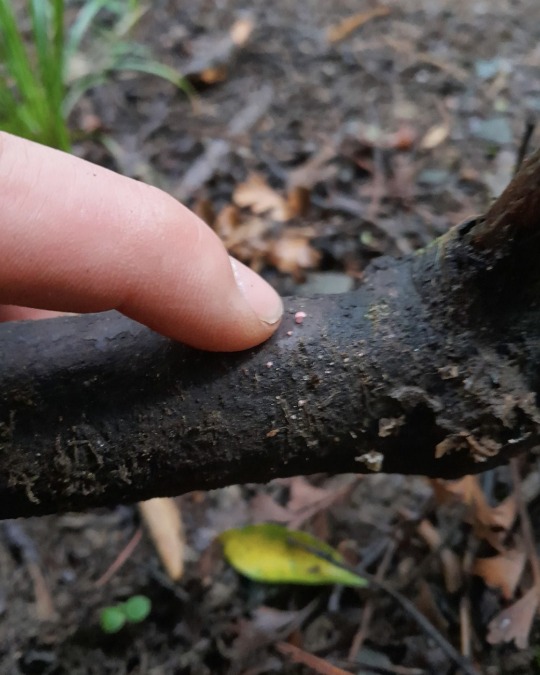
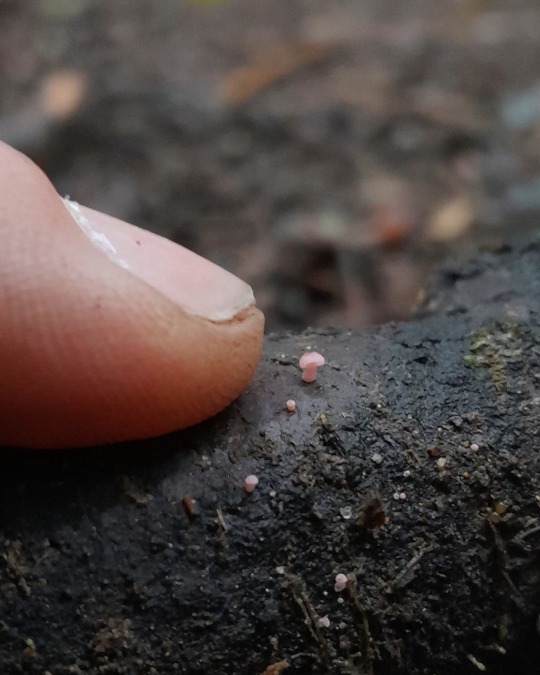
Super tiny Mycena Roseoflava.
Photographed by cyanesense
#Joseph Pallante#Mycena roseoflava#greta stevenson#women in STEM#mycologist#Mycenaceae#Agaricales#Agaricomycetes#Basidiomycota#basidiocarps#<- this is fungus familiy that contains ->#mushrooms#fungi#nature photography#new zealand#aotearoa#hollowinthegrotto#photo#mollybeenoel#mycellium#photography#small shroom#cute#pink#pretty#mycology#bioluminescence#small#tiny#fave
49K notes
·
View notes
Text
terca-feira
You gain strength through your hardships Whatever you learn easily or master effortlessly tends to be forgotten. The lessons you gain through repeated mistakes are what gives you genuine strength. (PL2014.29) Oyashikiri photos. Shirley K, NZ

View On WordPress
0 notes
Text
#2546-2548 - Sooty Beech Scale, Sooty Beech Mold, and the Common European Yellowjacket


One of the features of the Antarctic Beech forests of New Zealand, particularly on the South Island, is the thick layer of what looks like black moss covering many of the trees. And the ground. And most of the plants in the understory.
The black moss is actually sooty mold, a complex combination of fungi from a variety of different Orders, thriving on the ludicrous amounts of honeydew pumped out by the Sooty Beech Scale Ultracoelostoma assimile. The white filaments sticking out of the mold in the first photo is the anal tube of the scale insects, the longest such tube of any insect. The insect is most abundant on Black Beech Nothofagus solandri (the black in the name is from the mold) and middle-aged trees may lose 80% of the sugars they make to them. Younger trees have smooth bark that doesn't offer safe nooks and crannies for the crawlers, and in mature trees the bark is too thick for the scale insects to drill through.
The honeydew is a keystone feature of the Nothofagus forests - birds, bats, reptiles and insects all feed on the honeydew. Some rely on it. There's at least two species of caterpillar that prey on the scale insects. And a beetle - the only one in its family - that feeds only on the sooty mold.

And then the wasps arrived.

Two species are the problem - Vespula vulgaris (see photo) and Vespula germanica. Both are now more common in the Nothofagus forests then they are anywhere else in the world, and by a horrifying degree. Not only are they getting a diet of pure rocket fuel for much of the year, they then denude the forest of invertebrate life to feed their larvae. By monopolising the honeydew supply they're starving the birds and other animals that need that food supply, especially since introduced mice, rats, and stoats are eating the fruit and seeds of the forest, or turning on the birds when they run out of mice.
St. Arnaud, Southern Alps, New Zealand
#Ultracoelostoma#nothofagus#vespula#vespidae#Coelostomidiidae#sooty mold#sooty beech mold#beech scale insect#sooty beech scale#ascomycetes#keystone species#invasive species#new zealand insect#new zealand fungi#new zealand plant#honeydew#nothofagaceae#st arnaud
4 notes
·
View notes
Text
100-Foot 'Walking Tree' In New Zealand Looks Like An Ent from Lord Of The Rings — And Is The Lone Survivor Of A Lost Forest
An Unusual Northern Rātā Tree that looks like it is striding across an empty field has been Crowned New Zealand's Tree of the Year. The Giant Plant, which looks strikingly similar to an Ent from "The Lord of the Rings," is Centuries old.
— By Harry Baker | June 5, 2024
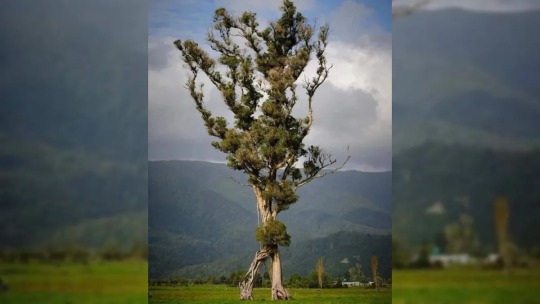
The "Walking Tree" is a Northern Rātā (Metrosideros Robusta). It is more than 100 Feet Tall and at least 150 Years Old. Image Credit: Gareth Andrews
A bizarre, giant tree with a pair of leg-like trunks looks like an Ent from "The Lord of the Rings" — and it has just been crowned New Zealand's Tree of the Year after strolling past the rest of the competition.
The strange tree, which has been nicknamed the "Walking Tree" because it looks like it's striding across a field, is a northern rātā (Metrosideros robusta) — one of New Zealand's tallest flowering tree species that can live for up to 1,000 years. It's roots and long, arm-like branches make the tree look like an Ent — a fictional race of tree-like creatures that guard the forests of Middle-earth.
The tree stands alone in the middle of a large paddock next to a cemetery near Karamea on the west coast of South Island. It is around 105 Feet (32 Meters) Tall — around the same height as a seven-story building, according to The New Zealand Tree Register.
The walking tree was the clear winner of the 2024 edition of the New Zealand Arboricultural Association's (NZ Arb) Tree of the Year award, walking away with 42% of the public vote, which included five other finalists, according to a statement emailed to Live Science.
"It just strode out into the lead right from the very start," competition organizer Brad Cadwallader told Radio New Zealand.
The walking tree is an "Exceptional Feature" and a "prime example of the remarkable trees that we, as New Zealanders, are fortunate to experience," NZ Arb President Richie Hill said in the statement.
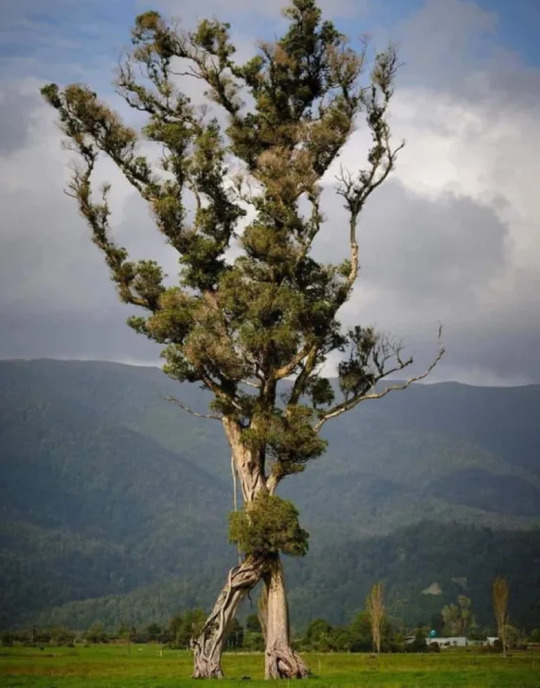
A tall tree with a pair of thick leg-like roots that make it look like the tree is walking. Image Credit: Gareth Andrews
It is unclear exactly how old the walking tree is, but award organizers noted it is the lone survivor of a forest that was cleared around 150 years ago. "The farming family back then clearly thought it was special because they left it," Cadwallader said.
Northern Rātā Trees Are Epiphytes — a type of tree that starts life growing on the surface of a host tree before growing aerial roots that eventually reach the ground. The walking tree likely began life high up in the canopy of its host, living off air and rainwater before reaching the ground. Its unusual root layout was likely caused by how it grew around its host tree, which probably died off centuries ago.
"That host tree has now gone," Cadwallader said. "Maybe the tree was either very, very big, or there may have been another tree that fell and lent against the host tree, and that's why the roots have split near the ground and given it that walking appearance."
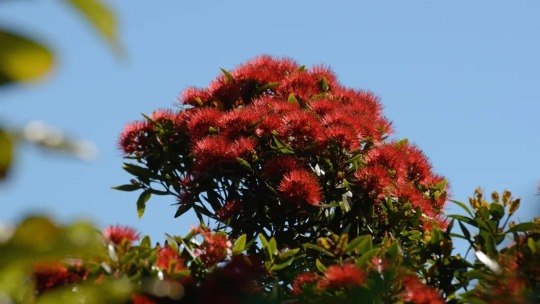
Northern Rātā Trees bloom bright red flowers between November and January. Image Credit: Shutterstock
Northern Rātā Trees are endemic to New Zealand and were once one of the most common species in the country's forests. However, their range has decreased over the last few decades and they are now listed as nationally vulnerable, according to the New Zealand Plant Conservation Network.
In addition to deforestation, the main threats to northern rātā are the invasive common brushtail possums (Trichosurus vulpecula), which destroy the trees by eating their leaves and gnawing at their roots.
The trees are also threatened by hybridization with the closely related Pōhutukawa Trees (Metrosideros Excelsa) and are susceptible to Myrtle Rust (Austropuccinia Psidii) — a Pathogenic Fungi native to South America that was detected in New Zealand for the first time in 2017.
#Planet Earth 🌍#Plants 🌱🪴#The Walking Tree#New Zealand 🇳🇿#The Lone Survivor | Lost Forest#An Ent#New Zealand Plant Conservation Network#Northern Rātā Trees Are Epiphytes#Brad Cadwallader#Exceptional Feature#NZ Arb | President | Richie Hill#Pōhutukawa Trees (Metrosideros Excelsa)#Myrtle Rust (Austropuccinia Psidii) | Pathogenic Fungi#Live Science
0 notes
Video
DSCN1904adjcr by Ray Jackson Via Flickr: Scytinotus longinquus, New Zealand native fungus.
0 notes
Text



















So so many mushrooms at Hunua Falls!
Never have I ever seen a green mushroom in real life
40 notes
·
View notes